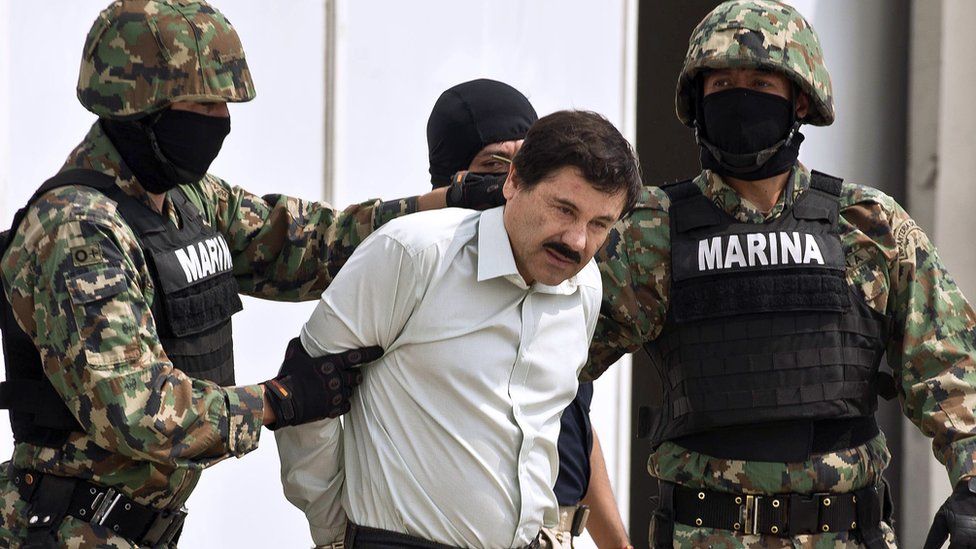Mexican cartels have long been a source of concern and fascination for people around the world. These criminal organisations have had a significant impact on Mexico’s society, economy, and political landscape. Understanding the history and operations of these cartels is crucial in comprehending the complex dynamics at play in Mexico.
Mexican cartels can be broadly categorized into two types: drug trafficking organizations (DTOs) and organized crime groups (OCGs). DTOs primarily focus on the production, transportation, and distribution of illegal drugs, while OCGs engage in a wide range of criminal activities, including drug trafficking, human smuggling, extortion, kidnapping, and money laundering.
The Sinaloa Cartel: A Brief History and Profile
The Sinaloa Cartel is one of the most powerful and influential drug trafficking organizations in Mexico. It was founded in the late 1980s by Joaquín “El Chapo” Guzmán, who quickly rose through the ranks to become its leader. Under Guzmán’s leadership, the Sinaloa Cartel expanded its operations across Mexico and into other countries, establishing itself as a dominant force in the global drug trade.
The Sinaloa Cartel’s key players include Ismael “El Mayo” Zambada García, who took over leadership after Guzmán’s arrest in 2014, and Rafael Caro Quintero, a founding member of the cartel who was released from prison in 2013. The cartel’s operations involve the production and trafficking of various drugs, including marijuana, cocaine, methamphetamine, and heroin.
In recent years, the Sinaloa Cartel has faced several challenges. The arrest and extradition of El Chapo Guzmán to the United States in 2017 dealt a significant blow to the organization. Additionally, internal power struggles and conflicts with rival cartels have weakened the cartel’s position. However, the Sinaloa Cartel remains a formidable force in the Mexican drug trade.
Los Zetas: The Most Ruthless and Violent Cartel in Mexico
Los Zetas is widely regarded as one of the most ruthless and violent cartels in Mexico. It was formed in the late 1990s by a group of former Mexican Special Forces soldiers who defected to work as enforcers for the Gulf Cartel. Over time, Los Zetas grew into an independent criminal organization with its own operations and territories.
Los Zetas gained notoriety for their extreme acts of violence and brutality. They have been responsible for numerous massacres, beheadings, and other gruesome acts. Their tactics include using fear and intimidation to control territories and eliminate rivals. The cartel has also diversified its criminal activities to include extortion, kidnapping, human trafficking, and oil theft.
In recent years, Los Zetas have faced significant challenges. The capture or killing of several key leaders has weakened the organization’s structure. Additionally, increased pressure from law enforcement agencies and rival cartels has disrupted their operations. However, Los Zetas still pose a significant threat to Mexico’s security.
The Gulf Cartel: A Powerhouse in Drug Trafficking and Human Smuggling
The Gulf Cartel is one of the oldest and most powerful drug trafficking organizations in Mexico. It was founded in the 1930s and initially focused on smuggling alcohol during the Prohibition era. Over time, the Gulf Cartel expanded its operations to include drug trafficking, human smuggling, and other criminal activities.
The Gulf Cartel’s key players include Osiel Cárdenas Guillén, who led the organization from the late 1990s until his arrest in 2003, and Juan García Abrego, who was one of the first Mexican drug lords to be extradited to the United States. The cartel’s operations involve the production and trafficking of various drugs, including cocaine, marijuana, methamphetamine, and heroin.
In recent years, the Gulf Cartel has faced numerous challenges. Internal power struggles and conflicts with rival cartels have weakened its position. Additionally, increased pressure from law enforcement agencies and the Mexican government has disrupted its operations. However, the Gulf Cartel remains a significant player in the Mexican drug trade.
The Juarez Cartel: A Legacy of Bloodshed and Violence
The Juarez Cartel is known for its legacy of bloodshed and violence. It was founded in the 1980s by Rafael Aguilar Guajardo and Amado Carrillo Fuentes. The cartel quickly rose to power in Ciudad Juarez, a strategic border city for drug trafficking into the United States.
The Juarez Cartel gained notoriety for its brutal tactics, including mass killings, beheadings, and public displays of violence. The cartel’s operations primarily focus on drug trafficking, but it is also involved in other criminal activities such as extortion, kidnapping, and human smuggling.
In recent years, the Juarez Cartel has faced significant challenges. Internal power struggles and conflicts with rival cartels have weakened its position. Additionally, increased pressure from law enforcement agencies and the Mexican government has disrupted its operations. However, the Juarez Cartel still poses a threat to Mexico’s security.
The Knights Templar: A Cartel with a Religious Twist
The Knights Templar is a unique cartel that combines criminal activities with religious symbolism. It was formed in the early 2010s by a group of former members of the La Familia Michoacana cartel. The Knights Templar claim to be defenders of the people and enforce their own code of conduct, which includes punishing corrupt officials and protecting local communities.
The Knights Templar’s operations primarily focus on drug trafficking, extortion, and illegal mining. They have also been involved in acts of violence and intimidation against rival cartels and local communities. The cartel’s leaders use religious imagery and rituals to legitimize their actions and gain support from the local population.
In recent years, the Knights Templar has faced significant challenges. Increased pressure from law enforcement agencies and rival cartels has disrupted their operations. Additionally, the Mexican government’s efforts to dismantle the cartel have weakened its structure. However, the Knights Templar still poses a threat to Mexico’s security.
The Ongoing Battle Against Mexican Cartels
The fight against Mexican cartels is an ongoing battle that requires a multi-faceted approach. The Mexican government has made significant efforts to combat these criminal organizations, including deploying military forces, implementing law enforcement reforms, and extraditing key cartel leaders to the United States.
International organizations, such as the United Nations Office on Drugs and Crime (UNODC) and the Drug Enforcement Administration (DEA), have also provided support to Mexico in its fight against cartels. These organizations offer training, intelligence sharing, and technical assistance to help strengthen Mexico’s law enforcement capabilities.
Despite these efforts, Mexican cartels continue to pose a significant threat to Mexico’s security and stability. The complex dynamics at play, including corruption, poverty, and social inequality, contribute to the resilience of these criminal organizations. Additionally, the demand for illegal drugs in the United States and other countries fuels the drug trade and provides a lucrative market for cartels.
The future prospects in the fight against Mexican cartels are uncertain. While progress has been made in dismantling some cartels and reducing their influence, new criminal organizations continue to emerge. The Mexican government and international organizations must continue to work together to address the root causes of cartel violence and strengthen law enforcement capabilities to effectively combat these criminal organizations. Only through a comprehensive and sustained effort can Mexico hope to overcome the challenges posed by its cartels.
If you’re interested in learning more about the most violent Mexican cartels, check out this article on why prison inmates join gangs. It delves into the factors that contribute to gang involvement within the prison system and explores the specific dynamics of Mexican cartels. Understanding the reasons behind gang affiliation can provide valuable insights into the operations and violence associated with these notorious criminal organizations.







